Hiyahiya S History Of Knitting Winter 2017
This winter we have continued to produce our increasingly popular history of knitting feature. Every Thursday we extensively research the history of a particular aspect of the knitting world and share our findings on Facebook. These are the stories that we have uncovered over the winter months of 2017…
Rags to Royalty, the Story of Irish Crochet and Queen Victoria
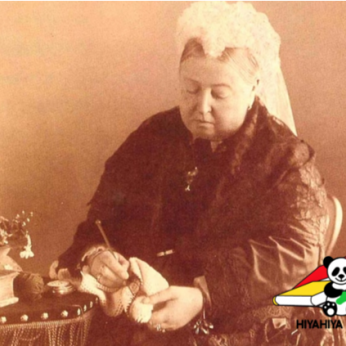
In 2014, crochet was ranked as Google’s third most popular ‘how to…’ search. It wasn’t always this popular though. It was once seen as a cheap substitute to traditional lacework and it wasn’t until the Great Irish Famine of the mid nineteenth century that crochet products became popular.
The demand for crocheted products grew as impoverished Irish families looked to bring in extra income by working in cooperatives to produce crocheted lace. Crochet work became a lifesaver for impoverished families in Ireland and the techniques that the cooperatives developed were used by men, women and children to produce crocheted products which could be sold abroad. Irish crochet became a form of famine relief for struggling families in Ireland and the skills that the Irish crochet workers had developed, spread across the country and led to the creation of extremely high quality and very sought after products. Foreign buyers had little knowledge of the humble beginnings of crochet and the squalor in which their delicate collars and cuffs were being produced.
Irish crochet improved the reputation of crochet products so much that Queen Victoria even purchased some crocheted Irish lace. What’s more she also taught herself how to crochet and made eight crocheted scarfs for members of the armed forces fighting in South Africa. Approximately two million people emigrated from Ireland between 1845 and 1859 and they took the skill of Irish Crochet with them, spreading its popularity even further. Irish workers had taken crochet from rags to royalty.
The real story behind where your wool came from!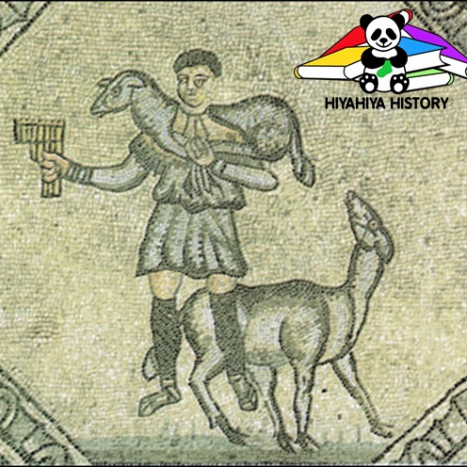
Where does your wool come from? No, not which shop is it from but rather what’s its history. Well, it all started back in 10,000 BC when sheep first began to be domesticated in Central Asia. By 3,500 BC wool was being spun and made into different products. This makes sheep production one of the world’s oldest industries and there are around 300 references to it in the Bible.
Sheep and the products that come from sheep were imported to Europe and Africa through trade and it is thought that newly developed woolly garments encouraged some humans to live in much colder territories around Asia and Europe. By the Bronze Age, all the major features of modern breeds of sheep were widespread across Western Asia. Sheep husbandry was commonplace in Europe from around 6000 BC as well though. The Greeks were said to name their sheep individually and the Romans contributed heavily to the distribution of sheep across Europe as they used them to support their armies.
By 1000 AD England and Spain had established themselves as the largest sheep production centres in the world and they dominated the wool trade over the next few centuries gaining great wealth. Through Columbus and latterly Cortez, sheep made their way to the Americas and by 1664 there were 10,000 sheep in the American Colonies. The European sheep monopoly soon began to crumble and wool became a worldwide commodity. That’s the real story about where your wool came from and it’s much more interesting than just which shop it’s from!
Wars and White House Sheep: The History of Knitting in America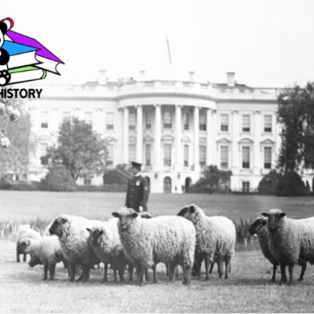
In previous issues of HiyaHiya’s History of knitting we have shown how knitting grew out of humble beginnings and spread across the world. This week we are looking at how knitting grew in America, a nation which currently boasts a $44 billion craft industry.
Knitting was already a popular activity during the American colonial era and it even played a role in the birth of the nation. It doesn’t get much more prestigious than that! American patriots in the colonial period organised knitting and sewing bees using homespun fabrics and yarns and sold them across the nation to dodge the British textiles tax which they saw as oppressive. Women who were able to make enough homespun clothing for their family were rewarded with the title “Free, Liberated, and Frugal.” It was the American Revolution and the subsequent revolutionary war with Britain which helped the American knitting industry grow.
By the nineteenth and twentieth centuries it was war and struggle that once again provided the impetus for the development of mass knitting societies. The American Civil War and the two World Wars brought about a greater necessity for knitted goods and America, like other nations in the world, took up the challenge of knitting for the benefit of their soldiers. It was said that during the American Civil War it was rare to see a woman without knitting needles in her hands as men from both North and South were in need of warm clothing. Such was the demand, schoolboys even took up knitting during the First and Second World Wars. Knitting for the troops became a widespread movement in the U.S and in 1918 it prompted President Wilson to graze sheep on the White House Lawns to raise even more awareness for knitting relief efforts. By the time of the Second World War American soldiers were being sent knitted socks and scarves from the USA, organised by First Lady Eleanor Roosevelt’s Knit for Defence organisation.
Knitting may now be a billion dollar past-time but in America it was once an act of revolution and a way of providing for the nation during times of war.
Alpaca Wool, the Rediscovered Fashion Trend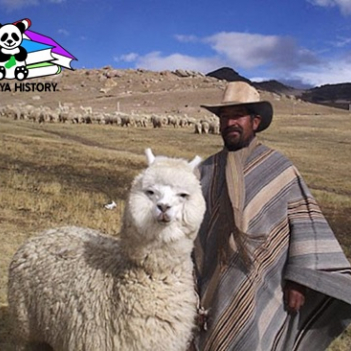
Alpaca wool has been popular in the UK and Europe since Sir Titus Salt introduced it to the European market place in the 1830s. He set up a factory in the North of England to process the imported alpaca fleece and later built a whole industrial town to house his workers producing his yarn. Alpaca wool garments soon became highly sought after garments, so much so they were left to future generations in a person’s will. Alpaca wool has been valuable in South America for centuries however.
A thousand years before the Roman Empire, long before alpaca wool hit the shelves of our stores, communities in South America were breeding alpacas selectively to get better fleeces and the finest quality fibres from their animals. The alpacas were prized possessions for 5000 years until the Spanish arrived in South America and saw the alpacas as a threat to their grazing sheep. Alpaca farming and the use of alpaca wool became increasingly rare.
It is thought that alpaca wool was used in woven textiles by peoples of what is now modern day Peru as long ago as 300 BC. As the ancient communities of South America came under threat, it took the ‘rediscovery’ of alpaca wool by Sir Titus Salt in the 1830s to bring about global recognition of the wool’s qualities. South America is now currently home to over 3 million alpacas and the popularity of alpaca wool has seen a revival in the traditional knitting techniques used by the ancient communities of South America.
Alpacas have now been imported around the world and the industry is on the up, in Australia it is growing at a rate of 17% each year for example. Alpacas and their wool were once at threat of becoming a relic of an ancient past but their unique wool has now been widely popular for nearly 200 years now. The ancient communities of South America and Sir Titus certainly had a good eye for fashion.
The Particularly Practical History of Mittens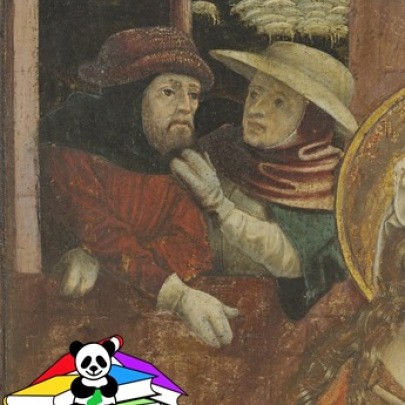
As the cold weather draws in, we thought it was appropriate that we gave you the history of a popular product with a particularly long and interesting history. Many of our followers and customers love to knit mittens, but did you know that they have remained relatively unchanged for over a millennium?
The earliest known woollen mittens were discovered in Latvia and have been dated at approximately 1000 A.D, however, due to the fact that wool biodegrades, it is highly possible that mittens could date from even further back. It is thought that women in Ancient Egypt used mitten like gloves to eat food with. To this day, woollen or woven mittens are an important part of national dress in Latvia and they naturally became a popular form of warm glove around the Baltic region and inside the Arctic Circle.
Mittens were made out of leather and cloth as well as wool and, whilst they did keep the hands of the wearer warm, it is said that by the 10th century, gloves were worn ceremonially and were a status symbol. Kings would be gifted gloves of all descriptions and they acted as an important class indicator. Contemporary fashion trends ensured that gloves with fingers were the most sought after though. This meant that mittens were primarily a practical form of glove used by shepherds rather than kings.
This is further emphasised by gunner’s mittens, originally used by North American hunters and latterly a popular glove choice for soldiers in the 1930s. These hybrid mitten like gloves have a flap which allows the tip of the mitten to be pulled back to reveal the exposed fingertips of the soldier allowing him to perform numerous task whilst still keeping his hands warm.
Mittens, as we know them, may be over 1000 years old, but they have had always had practicality in mind despite their role as ceremonial gifts and in national dress.
Immigrants, Good Byes and Yarns 
Ever had trouble letting go of some of the yarn in your stash? Well how about this for a tale about holding on to your yarn. This #ThrowbackThursday we are talking about balls of yarn and how they played a role in an important parting gesture made by immigrants leaving family members on their way to America for the first time.
As families began to leave Italy for the east coast of America in the late nineteenth century and early twentieth century, a peculiar ritual began between those boarding the passenger ships and those family members who were staying behind. Large balls of yarn would be carried onto the decks of the steamer ships by the soon to be immigrants and they would throw one end of the yarn down to their anxious friends and family below. Each person held on to an end of the yarn and as the boat pulled away the ball would unravel and the two people would remain in contact, even when they could no longer see each other. Eventually the wool would snap and the thin strands from various yarns would flutter and fly away in the wind behind the boat.
This farewell ritual was sometimes performed with the fabric of a beloved family garment and soon it spread outside of the Italian community to other immigrants hoping to make it into America. Balls of wool were more than just materials to these desperate families who sent their loved ones to America, they marked the final embrace between two people who aspired to one day see each other again, hopefully under better circumstances.
Brilliant Brocade and Where it Came From 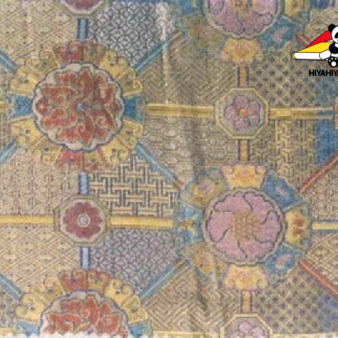
One of the most popular things about our gift sets are the luxurious brocaded cases they come in. This Chinese fabric is steeped in history and secrecy but today it is one of the most well-known and commonly used fabrics in the world. For this week’s #ThrowbackThursday, HiyaHiya’s History of Knitting will be all about brocade and how the secretive practices surrounding it become common knowledge.
Brocade was initially a high quality Chinese, silk fabric with intricate patterns from Chinese folklore woven into it. It has been woven in China since silk was first discovered in ancient times. The most sought after variations of brocade are Yun, Shu, Song, Zhuang and Ke. Minerals and plants were used as dyes and the quality of brocade became luxurious enough for emperors to wear. Yun brocade, for example, was well known for its gold and silver threads and in the Yuan Dynasty it was used to make imperial robes.
The isolationist and secretive nature of ancient China ensured that brocade remained one of China’s best kept secrets. As brocade became a status symbol exclusively worn by the wealthy, its accessibility also decreased. That was until the Han Dynasty (206BC) initiated new relations with its neighbouring regions and these highly prized garments made it onto the Silk Road and transformed this Asia passage into an illustrious trade route. Silk exports from China soon reached Europe and the elites of the Byzantine Empire helped to make brocade a staple of high-fashion outside of China.
The brocade style used to make our gift set cases resembles Zhuang brocade which originates from Guangxi province and is made on a ‘pig cage loom’. The varieties of this traditional fabric are numerous and there are many different designs. What is clear though, is that the Silk Road and the emperors of the Han Dynasty are who we have to thank for our HiyaHiya brocade cases.
